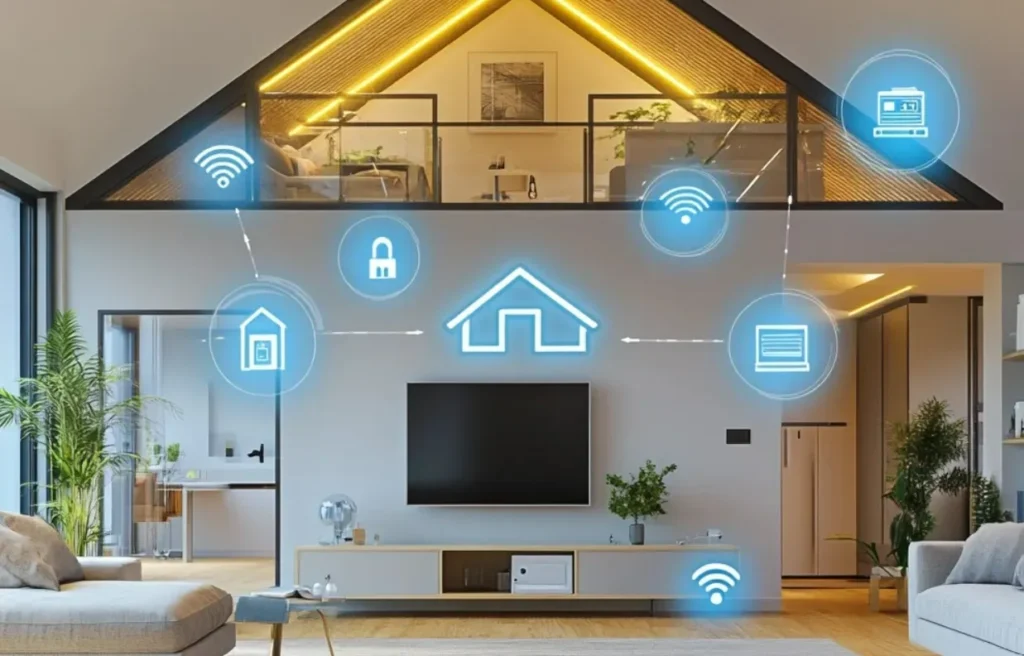
Smart home integration for beginners: A Guide to Getting Started
In today’s fast-paced world, the concept of a smart home is no longer a futuristic dream. It’s a reality that is accessible to everyone, including beginners. Whether you’re a tech enthusiast or someone curious about making life more convenient, smart home integration offers endless possibilities. In this guide, we’ll explore how beginners can start their journey into the world of smart homes.

What is Smart Home Integration?
Smart home integration involves connecting various devices and systems in your home to work together seamlessly. It allows you to control everything from lighting and thermostats to security cameras and appliances through a single interface, usually a smartphone app or a voice assistant.
Why Consider a Smart Home?
There are numerous benefits to smart home integration. Not only does it enhance convenience by allowing you to control devices remotely, but it also improves energy efficiency and enhances security. For instance, you can monitor your home through smart cameras or adjust your thermostat to save energy.
Essential Components for Beginners
Smart Speakers and Displays
Smart speakers and displays are often the entry point for many into the world of smart homes. Devices like the Amazon Echo or Google Nest Hub allow you to control other smart devices, play music, and even provide answers to your questions.
Smart Lighting
One of the simplest ways to start with smart home integration is through smart lighting. You can control the brightness, color, and schedule of your lights with voice commands or an app. It’s not only convenient but also a great way to save energy.
Smart Thermostats
Smart thermostats are another excellent addition for beginners. They learn your schedule and preferences, adjusting the temperature accordingly to provide comfort while saving energy. Popular options include the Nest Thermostat and Ecobee.
Getting Started with Smart Home Integration
Choosing a Smart Home Ecosystem
Before diving into smart home integration, it’s crucial to choose a smart home ecosystem that suits your needs. Some popular ecosystems include Amazon Alexa, Google Assistant, and Apple HomeKit. Each has its strengths, so consider compatibility with the devices you plan to use.
Setting Up Your Devices
Once you’ve chosen your ecosystem, the next step is setting up your devices. This usually involves downloading the relevant app, creating an account, and following the setup instructions. Most devices come with easy-to-follow guides to help you get started.
Creating Routines and Automations
With your devices set up, you can start creating routines and automations. These allow you to automate tasks based on triggers such as time of day or your location. For example, you can set your lights to turn on automatically when you arrive home.
Overcoming Common Challenges
Compatibility Issues
One of the challenges beginners might face is compatibility issues between different devices. It’s essential to ensure that the devices you choose are compatible with your chosen ecosystem.
Privacy Concerns
Privacy is another concern for many when it comes to smart home integration. Be sure to read the privacy policies of your devices and take steps to secure your network, such as using strong passwords and keeping your software up to date.
Enhancing Your Smart Home Experience
Integrating Smart Garage Door Openers
One way to enhance your smart home experience is by integrating smart garage door openers. This allows you to open and close your garage remotely, adding an extra layer of convenience and security.
Exploring AI in Smart Home Systems
Another exciting development is the use of AI in smart home systems. AI can help predict your needs, making your home even more responsive and efficient.
Learning More About Smart Home Solutions
The Lifespan of Smart Devices
Understanding the lifespan of smart devices is essential for planning your smart home setup. Knowing how long devices last can help you make informed decisions about when to upgrade or replace them.
Smart Home Solutions for Pets
For pet owners, there are smart home solutions for pets that can make caring for your furry friends easier. From smart feeders to pet cameras, these solutions ensure your pets are well taken care of even when you’re not home.
Conclusion
Smart home integration for beginners is an exciting journey that offers numerous benefits. By starting with essential components like smart speakers and lighting, choosing the right ecosystem, and overcoming common challenges, you can create a smart home that enhances your lifestyle. As technology continues to evolve, the possibilities for smart homes will only expand, making it an exciting time to get started.

Frequently Asked Questions
What is the best smart home ecosystem for beginners?
The best ecosystem depends on your needs and the devices you plan to use. Popular options include Amazon Alexa, Google Assistant, and Apple HomeKit.
How do I ensure my smart home devices are secure?
To secure your devices, use strong passwords, keep your software updated, and be mindful of the privacy policies of the devices you choose.
Can I integrate my existing devices into a smart home system?
Many existing devices can be integrated into a smart home system through the use of smart plugs or hubs. Check compatibility with your chosen ecosystem.
For more information on integrating smart home devices, visit the Home Assistant website.
This article contains affiliate links. We may earn a commission at no extra cost to you.